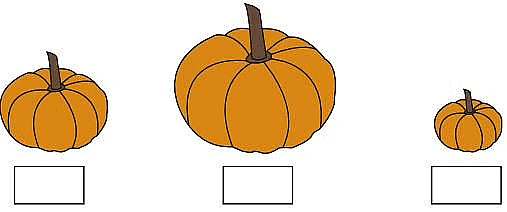The Longest Step Class 2 Worksheet Maths Chapter 13
Q.1. Compare the capacity and fill in the box with appropriate symbol <, > or = in this problem.
Q.2. Compare the capacity and fill in the box with appropriate symbol <, > or = in this problem.
Q.3. Compare the capacity and fill in the box with appropriate symbol <, > or = in this problem.
Q.4. Compare the capacity and fill in the box with appropriate symbol <, > or = in this problem.
Q.5. Compare the capacity and fill in the box with appropriate symbol <, > or = in this problem.
Q.6. Compare the sizes of vegetables:
Write 1 under small size, 2 under medium size and 3 under big size.
Q.7. Compare the sizes of vegetables:
Write 1 under small size, 2 under medium size and 3 under big size.
Q.8. Compare the sizes of vegetables:
Write 1 under small size, 2 under medium size and 3 under big size.
Q.9. Compare the sizes of vegetables:
Write 1 under small size, 2 under medium size and 3 under big size.
Q.10. Look at the object in section A. Circle the object in section B with the same size.
| Section A | Section B |
 |  |
Q.11. Look at the object in section A. Circle the object in section B with the same size.
| Section A | Section B |
 |  |
Q.12. Look at the object in section A. Circle the object in section B with the same size.
| Section A | SectionB |
 |  |
Q.13. Look at the object in section A. Circle the object in section B with the same size.
| Section A | Section B |
 |  |
You can access the solutions to this worksheet here.
|
30 videos|66 docs|21 tests
|
FAQs on The Longest Step Class 2 Worksheet Maths Chapter 13
| 1. What is the main theme of "The Longest Step"? |  |
| 2. Who is the author of "The Longest Step"? |  |
| 3. What are the key lessons learned from the characters in "The Longest Step"? |  |
| 4. How does the setting influence the story in "The Longest Step"? |  |
| 5. Is "The Longest Step" suitable for all age groups? |  |

















